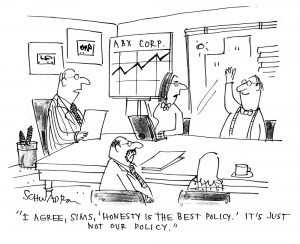
Innovation and Culture, Culture and Innovation maybe permanently, inexorably linked. Like the age-old riddle about silence–which expires the moment you say its name—some might argue culture defies cultivation.
 Bulldog Drummond is a design and innovation firm in San Diego. One of their Principals, Shawn Parr recently wrote, “Culture Eats Strategy For Lunch; sit on a Southwest flight to anywhere, buy shoes from Zappos.com, pants from Nordstrom, groceries from Whole Foods, anything from Costco, a Starbucks espresso, or a Double-Double from In N’ Out, and you’ll get a taste of these brands’ vibrant cultures.”
Bulldog Drummond is a design and innovation firm in San Diego. One of their Principals, Shawn Parr recently wrote, “Culture Eats Strategy For Lunch; sit on a Southwest flight to anywhere, buy shoes from Zappos.com, pants from Nordstrom, groceries from Whole Foods, anything from Costco, a Starbucks espresso, or a Double-Double from In N’ Out, and you’ll get a taste of these brands’ vibrant cultures.”
Culture is a balanced blend of human psychology, attitudes, actions, and beliefs that combined create pleasure or pain, serious momentum or miserable stagnation. A strong culture flourishes with a clear set of values and norms that actively guide the way a company operates.

Employees are actively and passionately engaged in the business, operating from a sense of confidence and empowerment rather than navigating their days through miserably extensive procedures and mind-numbing bureaucracy.
Successful company culture can make the difference between a workplace people dread and one they brag about. You don’t have to have a Google-sized budget to offer great culture. Many culture-changing initiatives have no direct costs to the company. In fact, when properly executed, culture-improving initiatives can lower company costs in both the short and long term.Arshad Chowdhury is the founder of Clear Gears, offers a tool which can help provide real-time performance reviews for business. He’s been on MSNBC and was featured in Fast Company. When speaking of culture Arshad suggests the following themes.
• Cultivate Experts — Imagine if every one of your employees was an expert in what they did; if, no matter how mundane their subject, they could teach it with passion. The benefits to you, your company, and your employees would be profound. Encourage people to become experts by having them research best practices in their field and share those with their colleagues on a regular basis.
• Recognize Your Team Every Day — People don’t work for just money. They work for recognition, too, so don’t deprive your employees of this vital form of compensation. They are working to build your company every day.
• Talk about the Future — Talk with the Team- Ask them where they want to be in five and 10 years. Armed with this information, help them achieve those goals, even if the goals aren’t related to your company.
Innovation and Culture, Culture and Innovation maybe permanently, inexorably linked. Like the age-old riddle about silence — which expires the moment you say its name—some might argue culture defies cultivation. Yet we know, we are the culture we make ourselves strong by communicating, by trusting and holding ourselves accountable for the Teams success. Understanding we will have conflict and making the system work is the only way to win time after time.
Thanks for all you do. It’s the voice of life that calls us to learn.


Jill McGillen at Next Turn Consulting did a wonderful presentation to the Bay Area BOLD group about the common themes in “Best Places to Work” companies. And Adrienne Fox wrote “Make a ‘Deal’” in the January 2012 issue of HR Magazine about articulating an employee value proposition. Engagement and culture can be clear and attractive and need to be for today’s world – Glassdoor and Vault will make it clear if you don’t have a good culture. Recruiters will be hard-pressed to find you good candidates if you don’t have a good culture and just keeping your current employees will be a challenge.
Connie Hampton
Scientific and Executive Search Consultant